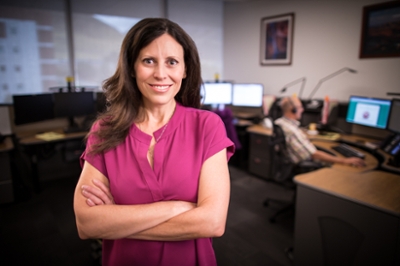Many areas of medicine have moved beyond the scrawled note and phone call era. But not when treating a poisoning.
Right now, communication between America’s poison control centers and hospital emergency rooms looks like something from the pre-computer age, with harried doctors and nurses scribbling notes on paper, and poison control pharmacists and nurses struggling to follow through on a patient’s lab tests and status updates.
It can be like a game of telephone.
“Most of the time, emergency department staff scribble information down on either a post-it note or a small paper form,” said Dr. Mollie Cummins, biomedical informatics professor at the University of Utah’s College of Nursing. “That may or may not be matched with the patient who shows up. And even if it does, it could be lost. It’s not always part of the permanent medical record. Whoever heard about it, knows about it — whatever they remember or scribbled down. It is not an ideal situation.”
Cummins, a former ER nurse who has studied the vulnerabilities and inefficiencies of such telephone-based communication for more than 10 years, has received a $1.25 million grant from the U.S. Agency for Healthcare Research & Quality and another $294,000 from the Office of the National Coordinator for Health Information Technology/Utah Health Information Network to develop and study a new technology-enabled system for collaboration between poison control centers and emergency departments.
The patient load – and number of opportunities for miscommunication and missed communication — is vast. In 2010, there were at least 2.4 million human poison exposures in the U.S.
Cummins and her team studied a random selection of emergency calls from 2011 and discovered weaknesses in the country’s telephone-based method for communicating about poisonings. In collaboration with the Utah Poison Control Center, the University’s College of Pharmacy and Intermountain Healthcare, among others, Dr. Cummins’ team reviewed transcripts of 120 recorded phone calls from patients to poison control and then from poison control to emergency departments. The cases relied almost entirely on telephone communication.
They reported their findings in Clinical Toxicology in 2013. Researchers found many cases of ambiguous communication – in nearly one-fourth of cases. In 12 percent of cases, the poison control specialist was unable to get requested information from the emergency room. And more than half of poisoned patients, 55 percent, were discharged prior to a final synchronized sign-off between the emergency room doctor and a poison control center specialist.
Part of the problem is that health care providers and poison control centers work with incompatible computer systems. The 50 poison control systems across the country use four record-keeping programs that do not “speak” with hospital electronic records, and vice versa.
Some of the disconnect can be blamed on the way poison control centers have evolved as part of the U.S. health care system, says Utah Poison Control Center Director Barbara Crouch.
“Poison centers have been on the outskirts,” said Crouch, a professor in the department of pharmacotherapy. “We’re small, overall. Oftentimes, we’re regional. We don’t serve a particular hospital.”
So Cummins and her partners plan to build a computer platform for electronically sending and receiving information during poisoning emergencies. Cummins and her team have created a dashboard that poison control specialists can use to send and receive information about a patient. They are collaborating with Intermountain Healthcare and the Utah Health Information Network to build the technical structure for information sharing.
Under the new program, a poison control specialist will send information to an emergency department, immediately after referring a caller for medical evaluation. The emergency department staff will be notified that the patient is on their way to the hospital and will be able to view a detailed summary and treatment recommendations, even before the patient arrives at the hospital. Poison control can check on the patient’s status and lab results once the person arrives and recommend treatments or changes in course based on the results.
Crouch welcomes the new system. “When resources are tight, it allows us to use our health experts and their time wisely,” she said. “We’re not bothering the nurse in the emergency department, and our specialists are not spending 20 minutes on hold.”
The system does not cut out a phone call when case discussion is appropriate, Cummins said. It simply provides everyone involved with the information most important to decision making, preventing a waste of precious time calling back and forth.
“These cases are complex. When you get into multiple substances — patients who already are taking 10 medications, who have allergies and complicated medical histories — there are a lot of variables at play,” she added. “In those cases, you really do need to discuss the case.”
The team currently is testing the pathways for sending and receiving information in a highly secure, reliable process. Cummins’ software will be completed by next spring. By the end of 2016, the program will be up and available for providers. In 2017, the system will be tested in two rural Intermountain Healthcare emergency departments before potential implementation in busier, urban hospitals.
And then it’s up to stakeholders to use the tools that Cummins’ team, and their collaborators at Intermountain Healthcare and the Utah Health Information Network, have created.
“It’s really dependent on hospitals — whether they want to put resources into it,” Cummins said.
Crouch figures they will. “It’s this mountain that’s insurmountable when you think about the logistics,” she said. “But if it benefits everyone in the long run, I’m hopeful people will see the value in that.”
Rebecca Walsh
Communications Specialist, College of Nursing
